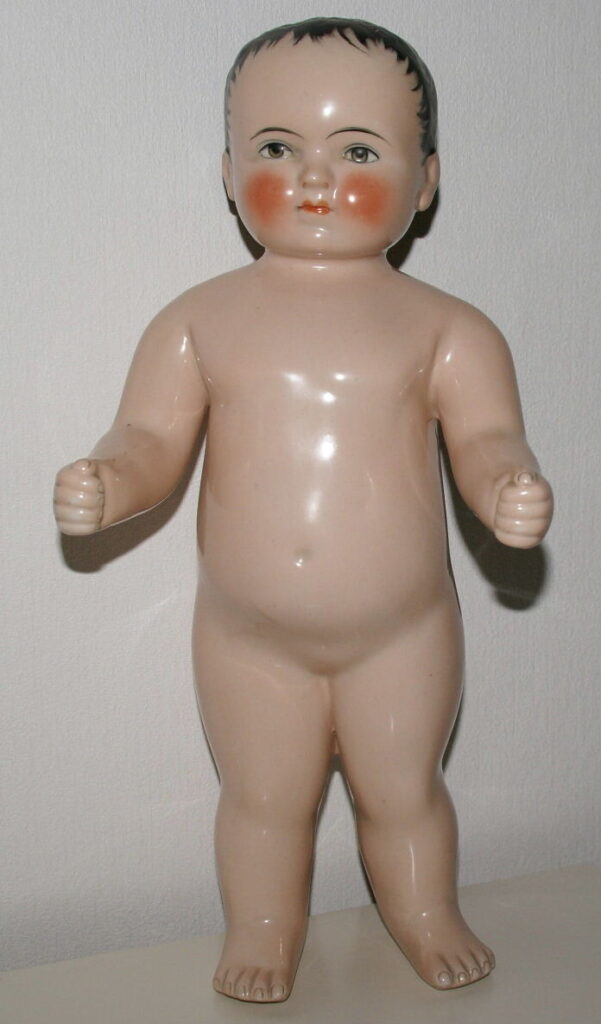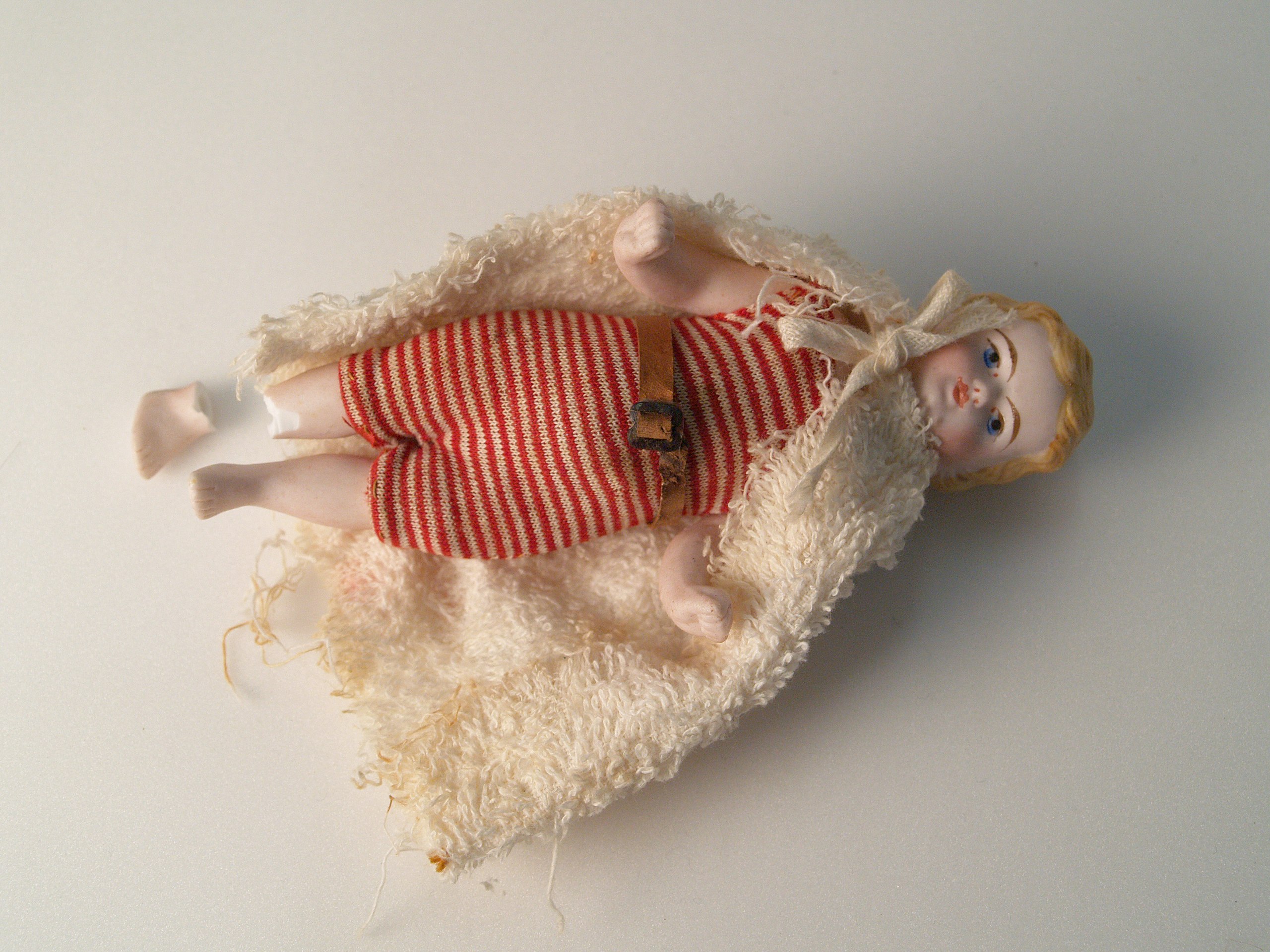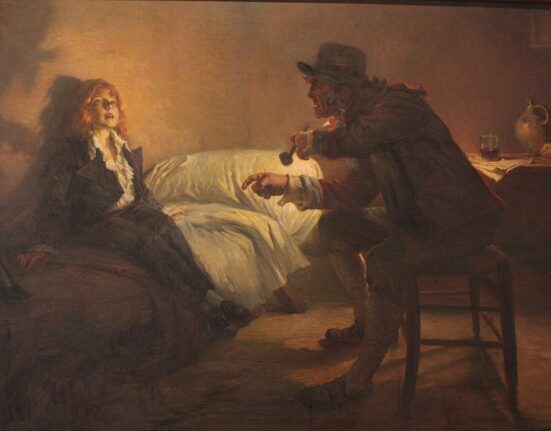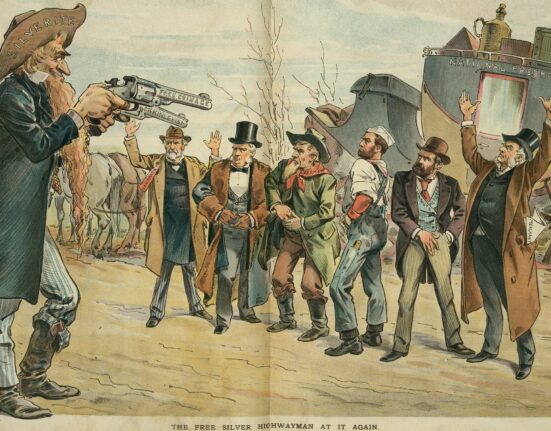Pediophobia is defined as an irrational fear of dolls. Many people find porcelain dolls, in particular, to be eerie or creepy. Despite their treasured status amongst doll collectors, the stiff but uncannily human features of these dolls are often likened to corpses. For those among us with this fear towards porcelain dolls, the Frozen Charlotte may be the most unsettling of all.
More Spooky History: The Fox Sisters: How a Prank Created the Modern Ghost Story
Bathing Babies
The doll that is now popularly known as “Frozen Charlotte” is a molded doll made from a single piece of porcelain or bisque. These dolls are not poseable and tend to resemble tiny figurines or statues more than your typical baby doll. Early Frozen Charlotte dolls were sometimes called “bathing babies” because they were designed to float in the bath, or at least to be more waterproof than a cloth-bodied or papier-mâché doll. (1)
Bathing babies were an instant success when they made their way to the United States from Germany in the mid nineteenth century on account of their low price. In fact, these dolls were also referred to as “penny dolls.”
Penny dolls were popular amongst small children because they were cheap, relatively durable, and usually small enough to fit into dollhouses easily. Additionally, the dolls were commonly used as charms inside of cakes and puddings. In many traditions, charms inside of cakes predict the future of the person who finds them. Presumably, a “bathing baby” would represent a bundle of joy in one’s future. (2)
More American History: Rough and Ready: the Little California Town Which Seceded from the Union
Who is Frozen Charlotte?
So where does the name “Frozen Charlotte” come from? The answer is a bit macabre. In February of 1840, a New York Observer article reported the death of a woman who allegedly froze to death while riding in a carriage on a twenty mile journey to a holiday ball. This tale caught the eye of a man named Seba Smith who published a poem about the incident. The poem, entitled “A Corpse Going to a Ball,” described a vain and foolish girl who refused to cover up her party gown and died as a result. This poem was adapted into a number of folk songs and ballads, many of which were spread under the name “Fair Charlotte.” These folk songs were quite popular throughout the later half of the nineteenth century. Those eerily stiff porcelain dolls with unchanging features came to be known as “Frozen Charlottes” as a reference to the story and song of Charlotte’s demise. Male dolls are usually referred to as “Frozen Charlies” as a masculinization of the name and as a reference to Charlotte’s date in “Fair Charlotte.” (3)(4)

“Fair Charlotte,” a folk song adapted from Seba Smith’s poem “A Corpse Going to a Ball”
Fair Charlotte lived on th mountain side
In a wild an’ lonely spot
There was not a house for miles around
Except her Father’s cat
T’was Christmas eve an’ th sun was low
As she cast a wistful eye
An’ to th window she did go
To watch th sleighs go by
At last, she saw a familiar sleigh
Come dashing to th door
An’ scarcely could she hear, Charles voice
So loud th wind did roar
O, daughter dear, her Mother said
This blanket ’round fold
There’s a deadly storm abroad tonight
You will catch your death of cold
Fair Charlotte smiled an’ said, I look
Just like a gypsy queed
To ride in blanket folded ’round
I never could be seen
My cloak an’ bonnet, are enough
For their both lined throughout
Besides I have a silken scarf
To twine my neck about
Her cloak an’ bonnet soon were on
As she stepped into th sleigh
An’ over hill an’ dale, they sped
Towards a tavern far away
Such a storm, says Charles, I never saw
These lines I scarcely can hold
An’ Charlotte whispered, these few words
I’m growing very cold
He cracked th whip an’ urged th team
Much faster than before
An’ over hill an’ dale, they sped
And loud th wind did roar
Such a night, said Charles, I never saw
It’s freezing on my brow
While Charlotte whispered, once again
I’m growing warmer now
They drove up to th tavern door
An’ Charles jumped out an’ said,
Why set you there like a monument
Sure you’re not dead
He asked her once, he asked her twice
He asked her three times more
He took ‘er by th hand, O God
T’was cold, t’warm no more
T’was then he knelt down by her side
He kissed her marble brow
An’ his thoughts went back to where she said,
I’m growing warmer now
Come all you vain an’ silly girls
You folks, you must obey
An’ n’er forget this fair young maid
Who froze t’ death in th sleigh
There are some who argue that the “Frozen Charlotte” name was not assigned to these dolls until the twentieth century when the doll collecting hobby began in earnest, but most major sources seem to indicate that the name has been around for almost as long as the dolls have been popular in the United States. In any case, the Frozen Charlotte is a fascinating bit of Victorian history made all the more eerie by the American folklore which surrounds it. (5)
More Literary History: How Upton Sinclair Accidentally Reformed the Meatpacking Industry







2 Comments